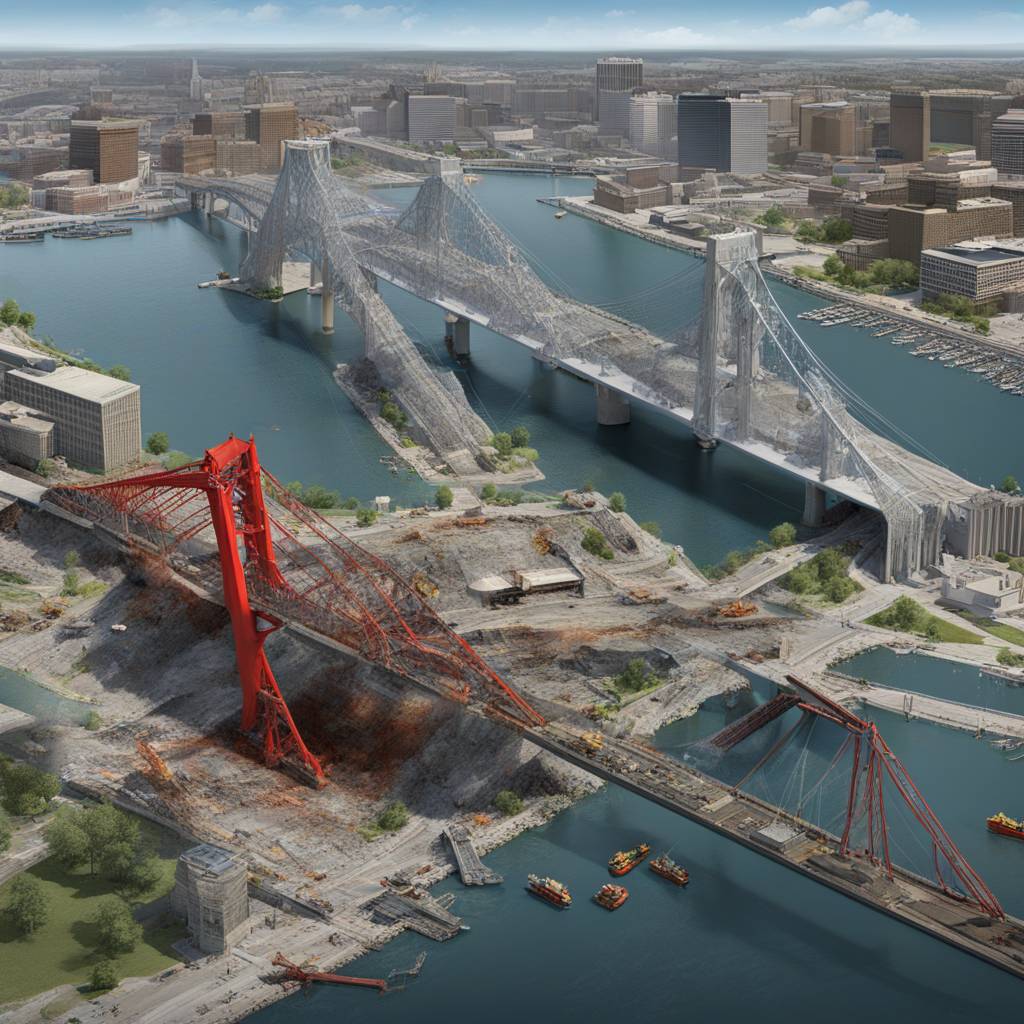The collapse of the Francis Scott Key Bridge in Baltimore has caused significant disruption to marine traffic, particularly in the Port of Baltimore. The U.S. Army Corps of Engineers, in collaboration with the Coast Guard, has been tasked with cleaning up the wreckage and ensuring that the waterway is safe for navigation once again. However, the Corps has indicated that it is too early to provide an estimate on when the channel will be cleared and reopened, emphasizing that the priority is currently on supporting recovery efforts led by the Coast Guard and local agencies.
The Baltimore District of the Army Corps of Engineers has activated its emergency operations center, mobilizing over 1,100 experts in engineering, construction, contracting, and operations to assist in the response to the bridge collapse. The Corps is providing underwater assessment capabilities, structural engineering support, and debris removal from the waterway to address potential threats to navigation. Despite these efforts, the recovery operation has transitioned into a salvage operation due to the challenging conditions around the submerged vehicles and debris, making it unsafe for divers to operate in the immediate area.
The tragic incident resulted in the recovery of two bodies from the river, with four construction workers still missing and presumed dead. The State Police Superintendent noted that the salvage operation is now focused on removing the superstructure surrounding the vehicles to enable safe access for further recovery efforts. Governor Wes Moore acknowledged the uncertainty surrounding the total costs and timeline of the cleanup process, but emphasized the determination and unity of all stakeholders to complete the task at hand. He reassured the public that despite the challenges ahead, the state is committed to leaving no one behind and ensuring the well-being of its people.
Transportation Secretary Pete Buttigieg highlighted the comprehensive rebuilding process required to address the aftermath of the bridge collapse, emphasizing that it will not be quick, easy, or cheap. The Army Corps of Engineers, tasked with leading the cleanup effort, is working closely with the Coast Guard and other agencies to coordinate the response and ensure the safety of marine traffic in the affected area. Efforts include providing specialized support such as certified bridge safety inspectors, urban search and rescue specialists, and debris removal to facilitate the recovery and salvage operations.
The complex nature of the salvage operation, necessitating specialized expertise and equipment, has presented challenges in navigating the wreckage underwater and around the superstructure. As a result, the transition from recovery to salvage mode has required a shift in strategy to safely address the conditions at the collapse site. Despite the obstacles, Governor Moore expressed unwavering resolve and unity in tackling the task ahead, emphasizing the importance of community support and collaboration in ensuring the successful completion of the cleanup and recovery efforts.
In the wake of the tragic bridge collapse, the Baltimore community faces the daunting task of rebuilding and recovering from the disaster. The commitment of state and federal agencies, including the Army Corps of Engineers and the Coast Guard, to support the recovery efforts underscores the dedication to restoring normalcy and safety in the region. Governor Moore’s assurances of unity, resilience, and unwavering determination emphasize the shared responsibility of all stakeholders in overcoming the challenges ahead and ensuring that no one is left behind in the aftermath of the devastating incident.


